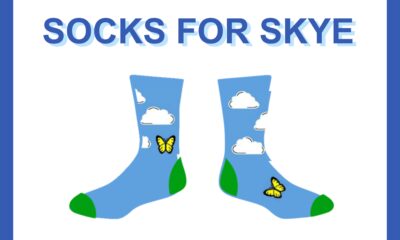Yellowstone
The New West: Private land conservation is vital to saving our wildlands
Published
8 years agoon
Posted By
Outlaw PartnersBy Todd Wilkinson EBS Environmental Columnist
A few years ago, the U.S. General Accounting Office found that half of all threatened and endangered species in America have at least 80 percent of their habitat on non-federal land. Many species, in fact, have some of their healthiest populations on private land and some of them occur only on private land.
Here’s another fact: Most Americans today reside in cities and few probably know that 88 percent of the rain and snow in America falls first on private land. The quality of the water that gets passed downstream ultimately reaching the taps of millions depends on private land stewardship practices.
Runoff laden with pollution is the major threat to water quality and the health of aquatic ecosystems. Outside of Alaska, 60 percent of U.S. private land is used to graze cattle or grow crops. Another 27 percent of privately held land is forest.
Private land plays a vital role not only in safeguarding species and clean water but it often figures into open-space protection that creates a sense of place.
Breathtaking, the Madison Valley, as we all know, is a pastoral visual idyll free of the sprawl that has destroyed other dells. Comprised of old-guard ranching families and other spreads more recently acquired to be recreation properties, the common denominator is an appreciation for open land untrammeled by subdivisions.
Jeff Laszlo is a fourth-generation owner of the 13,000-acre Granger Ranches. Schooled in New England, he lives today in Montana full-time, wooed away from the city by a hands-on wetland restoration project that has been held up as a national model.
The rehabilitation of O’Dell Creek and adjacent ponds is located right in the middle of his cattle operation. Putting wetlands back in place, decades after they were drained, has yielded unforeseen dividends.
Laszlo says the greatest satisfaction has been carrying out native fish restoration, seeing rare trumpeter swans finding refuge and witnessing an abundance of large animals and avifauna return. The public doesn’t regard ranchers as operating waterworks but that’s essentially what they do, according to Laszlo.
Doing right by the bottom line, he says, is not mutually exclusive of protecting the environment. The O’Dell Creek project is a striking example of public-private partnerships.
Brian Ulring is another example of that partnership. Manager of the J Bar L Ranch in Montana’s Centennial Valley, he’s also a co-founder— along with Harlowton, Montana rancher Zach Jones— of Yellowstone Grassfed Beef. Ulring and Jones work only with producers who practice stewardship that yields ecological benefits.
Ulring is wary of top-down programs implemented afar from Washington, D.C. He sees social change occurring that enables consumers to vote for stewardship with their wallets, which is far more effective, he says, that trying to engineer outcomes. He likes keeping things simple instead of exacerbating complexity that only drives up costs.
“I’m sort of a free market guy,” Ulring says. “I’d love it if people who care a lot about grizzly bears and wolves would pay a little extra for our beef because of the associated risk and cost of managing proactively to mitigate conflicts. I’m familiar with the customary rebuttal that bears and wolves have the same right to be on the landscape as cows. I couldn’t agree more and, in turn, the public needs to recognize the benefits it receives from private landowners.”
Ulring often hears arguments made by some that beef cows should be removed from all public lands and cattle replaced by native bison. They ignore the fact that cattle ranchers are the next-door neighbors and sit on essential winter habitat. Until bison come back to the Centennial, rangeland, which evolved with grazing animals present, bovines and cattle can be managed to mimic bison.
Ulring’s boss is no ordinary landowner. Peggy Dulany is the daughter of David Rockefeller and granddaughter of oil tycoon John D. Rockefeller. The latter’s private land purchases in Jackson Hole led to the expanded boundaries of today’s Grand Teton National Park.
Dulany’s convictions as a conservationist are resolute. She supports Ulring’s quest to ensure that cattle grazing, which occurs on 20,000 acres of deeded and leased land, is accomplished with the best interests of wildlife in mind. For part of the year, J Bar L cattle are turned out onto Red Rock Lakes National Wildlife Refuge, a place where, historically, bison roamed and their grazing shaped the grasslands.
An advocate for building sustainable human communities on the international scene, Dulany has been an active participant in the local grazing association that has taken great strides to be wildlife friendly, including adopting ranching practices that are friendly to wolves and grizzlies.
It’s only happened, Ulring says, because there is a shared sense of stakeholdership and recognition from federal land managers that public wildlife enjoys a place on private land.
For the sake of healthy wildlife populations in Greater Yellowstone and beyond, it’s not hard to understand why public-private partnerships are important.
EBS publishes Todd Wilkinson’s New West column every week online and twice a month in the print version of the paper. Wilkinson is author of the award-winning and critically acclaimed “Grizzlies of Pilgrim Creek, An Intimate Portrait of 399, the Most Famous Bear of Greater Yellowstone,” featuring 150 amazing photographs by Thomas D. Mangelsen. The book is only available at mangelsen.com/grizzly and when you order today you will receive a copy autographed by both author and photographer. Wilkinson also wrote a profile of Yellowstone Superintendent Dan Wenk for the summer 2016 edition of Mountain Outlaw magazine, now on newsstands.
The Outlaw Partners is a creative marketing, media and events company based in Big Sky, Montana.


Upcoming Events
april, 2024
Event Type :
All
All
Arts
Education
Music
Other
Sports
Event Details
Saturday, March 23rd 6:00-8:00pm We will combine the heart-opening powers of cacao with the transcendental powers of breathwork and sound. Together, these practices will give us the opportunity for a deep
more
Event Details
Saturday, March 23rd 6:00-8:00pm
Time
March 23 (Saturday) 6:00 pm - April 23 (Tuesday) 8:00 pm
Location
Santosha Wellness Center
169 Snowy Mountain Circle
Event Details
We all are familiar with using a limited palette, but do you use one? Do you know how to use a
more
Event Details
We all are familiar with using a limited palette, but do you use one? Do you know how to use a limited palette to create different color combinations? Are you tired of carrying around 15-20 different tubes when you paint plein air? Have you ever wanted to create a certain “mood” in a painting but failed? Do you create a lot of mud? Do you struggle to achieve color harmony? All these problems are addressed in John’s workbook in clear and concise language!
Based on the bestselling “Limited Palatte, Unlimited Color” workbook written by John Pototschnik, the workshop is run by Maggie Shane and Annie McCoy, accomplished landscape (acrylic) and plein air (oil) artists,exhibitors at the Big Sky Artists’ Studio & Gallery and members of the Big Sky Artists Collective.
Each student will receive a copy of “Limited Palette, Unlimited Color” to keep and take home to continue your limited palette journey. We will show you how to use the color wheel and mix your own clean mixtures to successfully create a mood for your paintings.
Each day, we will create a different limited palette color chart and paint a version of a simple landscape using John’s directives. You will then be able to go home and paint more schemes using the book for guidance.
Workshop is open to painters (oil or acrylic) of any level although students must have some basic knowledge of the medium he or she uses. Students will be provided the book ($92 value), color wheel, value scale and canvas papers to complete the daily exercises.
Sundays, April 14, 21 and 28, 2024
Noon until 6PM.
$170.
Time
14 (Sunday) 12:00 pm - 28 (Sunday) 6:00 pm
Event Details
Trivia from 7 to 9 p.m. at The Waypoint in Town Center. Participation is free, food and beverages available.
Event Details
Trivia from 7 to 9 p.m. at The Waypoint in Town Center. Participation is free, food and beverages available.
Time
(Wednesday) 7:00 pm - 9:00 pm
Location
The Waypoint
50 Ousel Falls Rd











